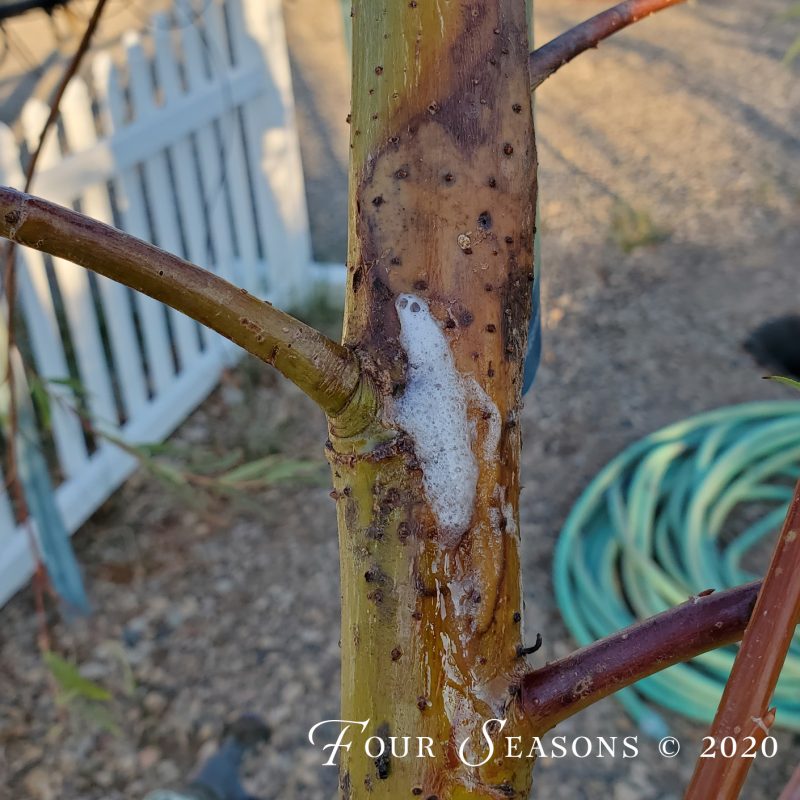Perhaps you’ve gone out to your yard lately and noticed what looks like spittle oozing down the sides of your aspen or willow trees. You might have shrugged it off, but you shouldn’t because you may have a case of slime flux and it can be deadly to your trees.
Slime Flux is a bacterial infection that affects trees when they become stressed, usually from drought, heat, or insects. Although this disease can infect any tree, most often you will see it on willows, poplars, and aspens.
It occurs when there is a crack in your tree and bacteria enters. These cracks can be microscopic so even though you can’t see them, it doesn’t mean they aren’t there. These cracks can be caused by anything- pruning, a lawnmower, birds, insects, frost, deer rubs, even your cat scratching on the bark is enough to compromise that layer. Once the bacteria gets under the bark, it begins to grow and kill living plant cells in the first layer under the bark – the cambium layer. As it multiplies it bubbles and oozes out in a milky substance that resembles spit. If you are a baker, it will remind you of proofing yeast because it’s the same fermentation process. Although it is odorless when it is in the tree, once it hits the outside, a foul odor may develop.
If slime flux isn’t controlled it will kill your tree although it may take several years. The good news is that it’s fairly easy and inexpensive to treat and control.
If you notice slime on your tree, begin by sterilizing a razor blade or knife. Remember you are dealing with an infection so keeping tools as clean as possible is important. Expose the infected area by cutting it away using your clean blade. You will want to cut around the area until you get to clean wood which I liken it to getting all of the margins cut out in a cancerous area. Be sure to cut the bark until you get to areas where there are no visible signs of infection. It’s probably going to end up being oval in shape with pointy ends.
Then prepare a solution of four parts water and one part either bleach or at least 70% rubbing alcohol, put it in a trigger spray bottle, and soak the area thoroughly. Repeat this every three to four days for a period of ten to twelve days.
Keep an eye on your tree to be sure the infection has dried up. Although some people may tell you to use pruning spray to seal that wound once it has dried up, in our area it’s not necessary. The climate here is usually dry enough that it will seal naturally on it’s own and by using pruning spray you run the chance of sealing infection in that spot again if for some reason you haven’t gotten it all the first time. By the following year the bark should begin to grow back over the wound, but it may take several years for the wound to completely heal.
We’ve seen a lot of cases this year due to the drought-like, dry conditions. Although it may make you nervous to act as the tree surgeon in your back yard, treating slime flux quickly is important for the health of your trees.

